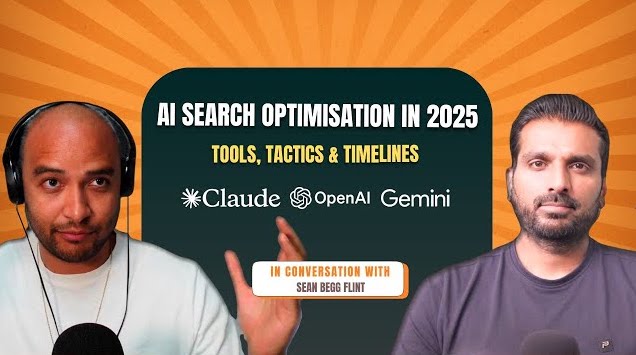As a B2B SEO agency founder, I’ve helped design and optimize countless landing pages for companies across different industries.
In this article, I’ve rounded up 7 of the best B2B landing page examples from current and past clients that truly get it right.
Whether you’re creating your first lead-generation page or refining an existing one, you’ll find plenty of design and copywriting principles to apply to your own landing page.
1. HR Datahub

Deciding on the right salary range is often a challenge for businesses looking to bring in fresh blood.
Offer too little, and they could lose talent to competitors. Offer too much, and the management might start asking questions.
As a salary benchmarking tool, this is the problem HR Datahub is trying to solve. And their landing page communicates this brilliantly.
The headline promises one thing every HR executive craves: simplified salary insights.
Below, the subtext further explains how it uses real-time salary data to help organizations make better, data-driven pay decisions.
Scrolling down a bit, there’s an explanation on how HR Datahub actually gets the data and keeps it fresh, along with a short snippet of recognizable client logos to build trust.

Design-wise, the page gets everything right. The use of white space, neutral background colors, and clean typography make the content easy to digest.
Once users are ready to take the next step and click “Book a Demo,” a calendar will pop up. From there, they simply need to pick a time slot that works best for them to schedule the call.

The lesson: Make it easy for potential buyers to understand what you offer, why they should trust you, and how to take action.
2. Proven Partners

Proven Partners isn’t just your average real estate marketing agency. As an international developer themselves, they know how to plan, develop, and manage both residential and commercial properties as well.
This presents unique positioning that not every real estate marketing agency has, and Proven Partners truly capitalize on it.
The design and copy on their homepage position the company not just as builders, but as partners who understand every stage of a project’s lifecycle.
From the initial project planning and branding concept to full-spectrum marketing campaigns, Proven Partners takes care of every stage of the development journey.
They also added a portfolio section, which shows aesthetic photos of its past projects to build credibility with high-end investors and developers.

The lesson: Identify your unique positioning or value proposition, then communicate it clearly in your copy.
3. Resource Guru

Resource Guru truly embodies the “show, don’t tell” marketing philosophy.
The SaaS platform shows an animation video of its software every chance it gets, starting from the hero section all the way to feature-specific areas.
They don’t just describe the features; they also show them in action. This design choice helps users grasp the platform’s capabilities much more quickly.
If you run a B2B SaaS company, take a page from Resource Guru’s playbook. Use short animations or explainer videos to show exactly how your product solves real-world problems.
That’s how you create a SaaS landing page that converts.
The lesson: Short animations or explainer videos are way more effective than mere text in showing exactly how your SaaS product works.
4. Decentriq

Numbers have the power to make claims feel more credible.
Saying “9 out of 10 people use our software” instantly sounds more believable than simply stating “many people use our software.”
As a data collaboration platform, Decentriq knows the psychology behind numbers very well.
Its landing page doesn’t just explain why businesses should invest in first-party data; it uses real statistics to provide tangible evidence.

Another thing I want to highlight is the copy. Notice how Decentriq keeps its headline and body text simple and easy to digest, despite operating in a highly technical industry.
This SaaS platform also utilizes a lot of visual cues, like short video content and illustrations, to break down complex features into easy-to-understand concepts.

The lesson: Add numbers and statistics to back up your claims. Also, remember that B2B buyers are busy. So, use simple language and illustrations to get your point across quickly.
5. Don’t Panic

What’s a better way to show that you’re a great creative marketing agency, then to show your creativity?
This is exactly the approach Don’t Panic London takes. The agency embraces a playful, tongue-in-cheek tone using witty copy and a dash of humor.
But they do it without sounding over the top or cringey.
The humor feels intentional and well-placed. It complements the copy instead of overshadowing it.

And it’s not just the copy. The cleverly chosen meme, the giant-sized typography – every element reinforces the agency’s positioning as a team that delivers serious results without taking itself too seriously.

The lesson: In the sea of corporate B2B jargon, a unique personality cuts through the noise.
6. Position Digital

One of my favorite B2B copywriting techniques is using questions in headings and body text.
Not just any question, but yes-or-no type of questions that are highly relevant to your offerings or the audience’s pain points.
The psychology is simple: when prospects find themselves answering “yes” to your questions, they’ve already taken a small step toward conversion.
That internal agreement makes it much easier to guide them through the sales journey.
This is the exact strategy I apply to our SaaS SEO service page.

Once they’ve achieved product–market fit, most SaaS founders shift their focus to building a scalable customer acquisition funnel.
The headline “Found product market fit?” speaks directly to that stage of growth and mindset. And by framing it as a question, it naturally invites founders to nod along and think, “Yes, that’s me.”
I then use the rest of the section to explain why growing SaaS companies should invest in SEO rather than PPC ads. Before adding client testimonials and case studies as a nail in the coffin.

The lesson: Lead with a question your ideal customers can’t help but say “yes” to. It’s one of the most effective ways to build instant alignment, spark curiosity, and set the stage for conversion.
7. Amaka Studio

Hiring full-time employees is expensive. And managing a large pool of freelancers can be tough.
Amaka Studio solves this by offering a creative-as-a-service (CaaS) subscription model, giving businesses the flexibility to access top creative talent without the overhead of hiring or the hassle of project-by-project management.
Its homepage communicates this value proposition with absolute clarity. Throughout the page, Amaka keeps positioning itself as a more flexible and affordable solution to traditional hiring and outsourcing.
There’s even a comparison table that illustrates the benefits of the CaaS model.

The page also does a great job of showing the step-by-step process of how Amaka works, along with real screenshots of the platform’s interface.

It’s a smart move for a relatively new service model. It helps potential clients visualize exactly what they’ll get, which can reduce uncertainty and spark curiosity.
The lesson: When introducing a new business model, clarity is everything. Use visuals, process breakdowns, and real examples to help prospects see why it’s a smarter alternative to what they’re used to.
The Anatomy of High-Performing B2B Landing Pages
If you hope to get some secret formulas for building a great landing page, sorry to disappoint you, but there’s no such thing.
However, from what I’ve seen, the best landing pages always have a few common traits:
- A clear headline: It’s your first audience filter. Visitors will decide whether or not they’ve come to the right page just by reading the title.
- Visual cues: Don’t just rely on words; throw in some visuals: a chart, a screenshot, maybe a quick demo video. Show (don’t just tell) how your product works.
- Trust signals: People want to see proof before they hand over anything. Adding real statistics, client testimonials, and client logos is great for building trust.
- Clean design: The goal of your landing page isn’t to win some design awards; it’s to make people convert. Avoid overcomplicating stuff. Keep everything simple and easy to understand.
- Call-to-action (CTA): Make your CTA impossible to miss. It should spell out exactly what you want people to do next.
Of course, nothing’s set in stone. Feel free to experiment with different landing page layouts and see what actually works.
But before you start designing, take a little time up front to sketch out your landing page.
Want to see how it’s done? Check out this step-by-step guide on landing page wireframing I’ve put together for you.
Key Takeaways
You’ve seen some of the best B2B landing page examples. Now it’s time to apply these winning principles to your own page:
- Know exactly what makes you unique.
- Communicate this uniqueness throughout the page.
- Use simple copy, clean design, and visual cues to get your point across fast.
- Back up your claims with testimonials, statistics, or client logos.
- Don’t be afraid to inject some personality; B2B decision makers are still humans with emotions.
And most importantly, keep refining your landing page. Great pages aren’t built overnight; they’re tested, improved, and optimized over time based on real user behavior.
If you’re ready to put these lessons into practice, partner with Position Digital.
We’ll help you create conversion-focused B2B landing pages that bring a steady stream of hot leads to your business.






